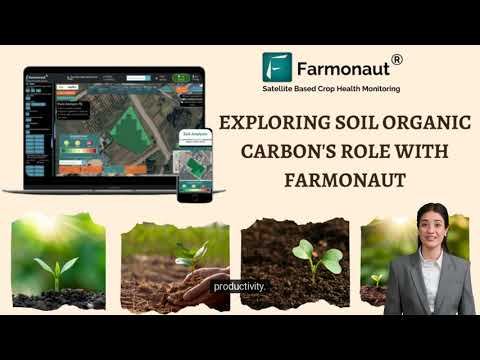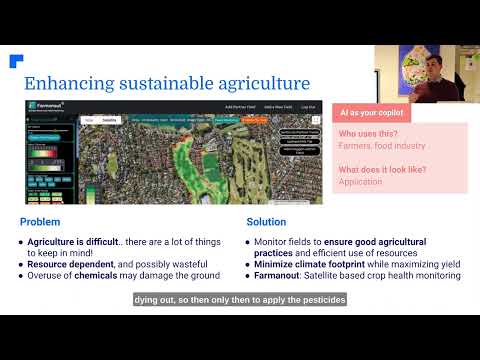Revolutionizing Sustainable Agriculture: How Controlled Environment Farming is Transforming New Jersey’s Produce Industry
“Controlled environment agriculture has reduced CO2 emissions by up to 30% through innovative greenhouse technology and eco-friendly packaging.”
In the heart of New Jersey, a green revolution is taking root, transforming the landscape of sustainable agriculture. At the forefront of this change is controlled environment agriculture (CEA), a cutting-edge approach that’s reshaping how we grow, package, and distribute fresh produce. As we delve into this exciting realm, we’ll explore how companies like Edible Garden AG Incorporated are pioneering innovative greenhouse technology and eco-friendly packaging to create a more sustainable future for our food systems.
The Rise of Controlled Environment Agriculture in New Jersey
Controlled environment agriculture represents a paradigm shift in how we approach farming. By utilizing advanced technologies and precise environmental controls, CEA allows for year-round production of high-quality crops while significantly reducing the ecological footprint associated with traditional farming methods. In New Jersey, this approach is gaining traction as a solution to the challenges posed by climate change, urbanization, and the need for more sustainable food production practices.

The adoption of CEA in the Garden State is not just a trend; it’s a necessary evolution in agriculture. With its dense population and proximity to major urban centers, New Jersey is ideally positioned to benefit from the advantages of controlled environment farming. These include:
- Increased crop yields in limited spaces
- Reduced water usage and pesticide application
- Year-round production capabilities
- Enhanced food safety and traceability
- Shortened supply chains for fresher produce
As we witness this agricultural transformation, it’s crucial to understand the role of technology in driving these changes. Companies like Farmonaut are at the forefront of providing innovative solutions that complement CEA practices. Their satellite-based farm management tools offer valuable insights for optimizing crop health and resource management, even in controlled environments.
Edible Garden: Pioneering Sustainable Practices in CEA
At the heart of New Jersey’s CEA revolution is Edible Garden AG Incorporated, a company that has embraced the challenge of creating a more sustainable food production system. With their state-of-the-art greenhouses in Belvidere, NJ, Edible Garden is setting new standards for locally grown, organic produce.
One of the most significant innovations introduced by Edible Garden is their curb-side recyclable pot. This eco-friendly packaging solution has been a game-changer in reducing the environmental impact of their operations. The full-scale rollout of these recyclable pots across their retail distribution network marks a significant milestone in their commitment to sustainability.
Key achievements of Edible Garden’s sustainable packaging initiative:
- Reduction of overall CO2 emissions by 11,803 metric tons in Walmart’s Project Gigaton Reporting
- Expansion of recyclable packaging to all retailers carrying Edible Garden’s signature herbs
- Alignment with the Zero-Waste Inspired® mission, minimizing ecological footprint
- Support for retail partners in meeting their sustainability goals
The impact of these initiatives extends beyond the company itself. By prioritizing sustainability, Edible Garden is setting an example for the entire industry and meeting the growing demand from environmentally conscious consumers for more sustainable products.

The Technology Behind Sustainable CEA
The success of controlled environment agriculture relies heavily on advanced technology. From climate control systems to LED lighting and hydroponic setups, every aspect of the growing environment is carefully managed to optimize plant growth while minimizing resource use.
Edible Garden has taken this technological integration a step further with their proprietary GreenThumb 2.0 software. This patented technology optimizes growing conditions in both vertical and traditional greenhouses, seeking to reduce pollution-generating food miles and enhance overall efficiency.
Key technological advancements in CEA include:
- Precision climate control systems
- Energy-efficient LED lighting
- Advanced hydroponic and aeroponic systems
- AI-driven crop management software
- Automated harvesting and packaging solutions
These technologies not only improve crop yields and quality but also significantly reduce the environmental impact of farming. By leveraging data and automation, CEA facilities can optimize resource use, minimize waste, and produce consistently high-quality crops year-round.
For those interested in exploring cutting-edge agricultural technology, Farmonaut’s API offers access to valuable satellite and weather data that can be integrated into existing farm management systems. This integration can provide additional layers of insight for CEA operations, helping to further optimize resource use and crop health.
The Environmental Impact of CEA
“A leading New Jersey produce company’s zero-waste farming techniques have decreased plastic waste by 50% in local retail networks.”
One of the most compelling aspects of controlled environment agriculture is its potential to significantly reduce the environmental impact of food production. Traditional agriculture is often associated with high water usage, extensive land use, and significant carbon emissions. CEA, on the other hand, offers a more sustainable alternative.
Let’s take a closer look at how CEA compares to traditional farming methods:
| Metric | Traditional Agriculture | Controlled Environment Agriculture (CEA) |
|---|---|---|
| Water Usage (gallons per acre) | 100,000 – 1,000,000 | 10,000 – 20,000 |
| Carbon Footprint (CO2 emissions per acre) | 4-5 tons | 1-2 tons |
| Land Efficiency (yield per acre) | 1x | 10-20x |
| Pesticide Use (lbs per acre) | 2-6 | 0-0.5 |
| Energy Consumption (kWh per pound of produce) | 0.5-1 | 1-2 |
| Waste Production (tons per acre) | 1-2 | 0.1-0.5 |
| Year-round Production Capability | No | Yes |
| Packaging Sustainability (recyclability percentage) | 30-50% | 80-100% |
As we can see from this comparison, CEA offers significant advantages in terms of resource efficiency and environmental impact. The reduced water usage, minimal pesticide application, and increased land efficiency are particularly noteworthy. While CEA does consume more energy due to the need for artificial lighting and climate control, the overall environmental benefits often outweigh this increased energy use, especially when renewable energy sources are utilized.
Edible Garden’s commitment to sustainability extends beyond their growing practices to include innovative packaging solutions. Their curb-side recyclable pots are a prime example of how the industry is addressing the challenge of plastic waste in agriculture. By ensuring that all take-home customer packaging can be recycled through most curb-side collection programs, they are taking a significant step towards reducing waste and minimizing their ecological footprint.
The Economic and Social Benefits of CEA
While the environmental benefits of controlled environment agriculture are clear, it’s important to also consider the economic and social impacts of this shift in farming practices. CEA has the potential to revitalize local economies, create new job opportunities, and improve food security in urban areas.
Key economic and social benefits of CEA include:
- Job creation in high-tech agriculture
- Reduced transportation costs and food miles
- Improved food security through year-round local production
- Enhanced food safety and traceability
- Support for local economies
In New Jersey, companies like Edible Garden are demonstrating how CEA can be a catalyst for positive change. By producing fresh, locally grown organic produce, they are not only meeting consumer demand for high-quality, sustainable products but also contributing to the local economy and food system resilience.
For those interested in leveraging technology to support sustainable agriculture, tools like the Farmonaut Android app and iOS app offer valuable resources for farm management and optimization.


Challenges and Future Directions
While controlled environment agriculture offers numerous benefits, it’s not without its challenges. As we look to the future of sustainable agriculture in New Jersey and beyond, it’s important to address these challenges head-on:
- High initial investment costs for CEA facilities
- Energy consumption and the need for renewable energy integration
- Skill development and workforce training for high-tech agriculture
- Scaling up production to meet growing demand
- Continued innovation in sustainable packaging and distribution
Despite these challenges, the future of CEA looks bright. Continued advancements in technology, increasing consumer demand for sustainable products, and growing support from policymakers are all contributing to the expansion of controlled environment agriculture.
Conclusion: A Sustainable Future for New Jersey’s Produce Industry
As we’ve explored throughout this article, controlled environment agriculture is revolutionizing sustainable food production in New Jersey. Companies like Edible Garden are leading the way with innovative greenhouse technology, eco-friendly packaging, and a commitment to zero-waste farming techniques. These initiatives are not only reducing the ecological footprint of agriculture but also meeting the growing demand for locally grown, organic produce.
The full-scale rollout of curb-side recyclable plant pots across retail networks is just one example of how sustainable agriculture practices can have a measurable impact on reducing CO2 emissions and waste. By prioritizing the values of environmentally conscious consumers, the industry is aligning its mission with a healthier, more sustainable future.
As we look ahead, it’s clear that controlled environment agriculture will play a crucial role in shaping the future of food production. With continued innovation in technology, packaging, and farming practices, we can expect to see even greater advancements in sustainable agriculture in the years to come.
For those interested in being part of this agricultural revolution, consider exploring the Farmonaut affiliate program. This program offers an opportunity to earn while supporting sustainable farming practices.
Earn With Farmonaut: Earn 20% recurring commission with Farmonaut’s affiliate program by sharing your promo code and helping farmers save 10%. Onboard 10 Elite farmers monthly to earn a minimum of $148,000 annually—start now and grow your income!
FAQs
- What is controlled environment agriculture (CEA)?
Controlled environment agriculture is a technology-based approach to food production that provides protection and maintains optimal growing conditions throughout the development of the crop. - How does CEA reduce environmental impact?
CEA reduces environmental impact by optimizing resource use, minimizing water consumption, reducing pesticide use, and allowing for year-round production in energy-efficient facilities. - What are the benefits of locally grown, organic produce?
Locally grown, organic produce offers fresher products, supports local economies, reduces transportation emissions, and often uses fewer pesticides and synthetic fertilizers. - How do recyclable plant pots contribute to sustainability?
Recyclable plant pots reduce plastic waste, lower CO2 emissions associated with production and disposal, and support circular economy principles in agriculture. - What role does technology play in sustainable agriculture?
Technology in sustainable agriculture enables precise resource management, optimizes growing conditions, improves crop yields, and facilitates data-driven decision-making for more efficient and environmentally friendly farming practices.




